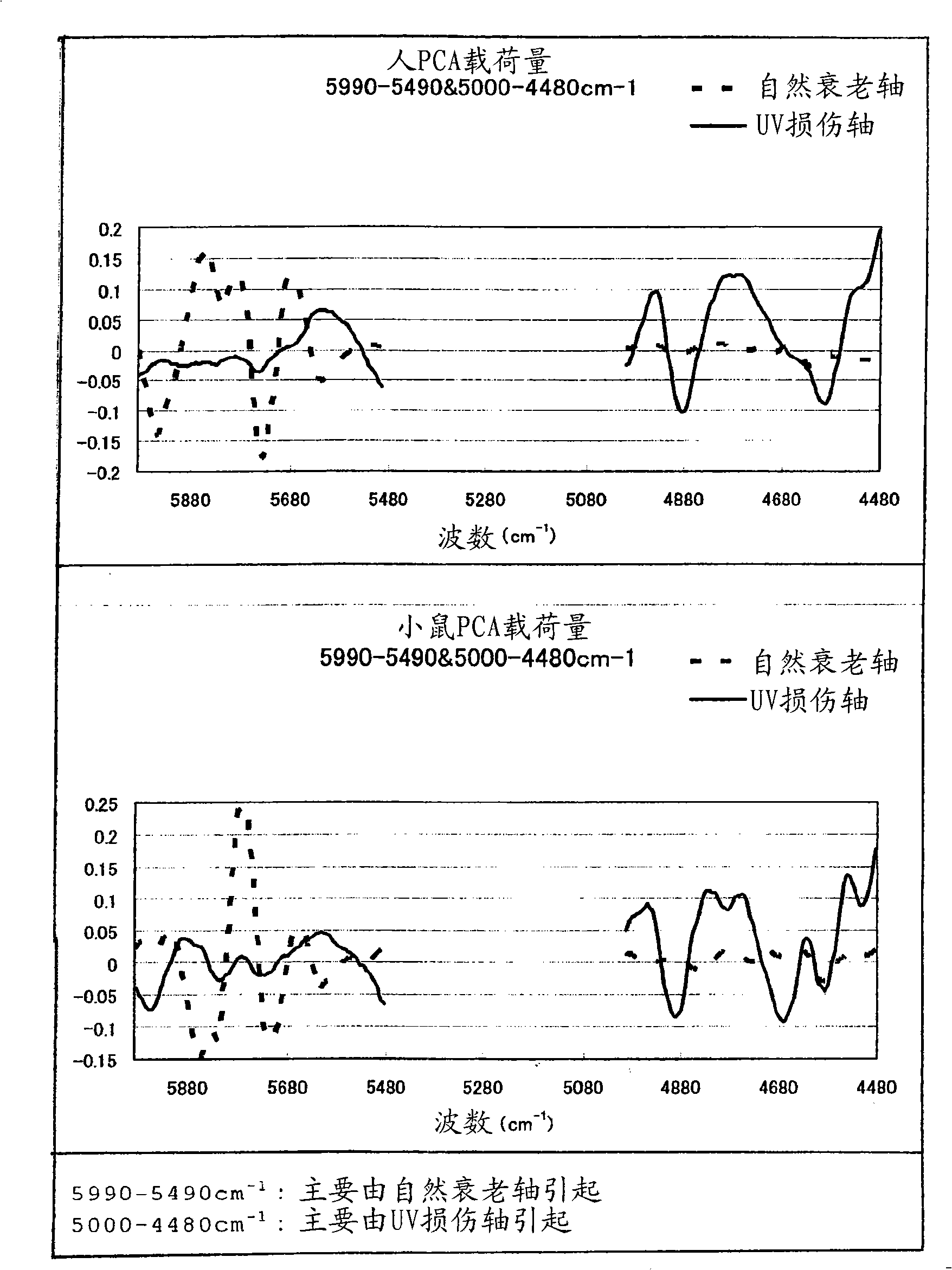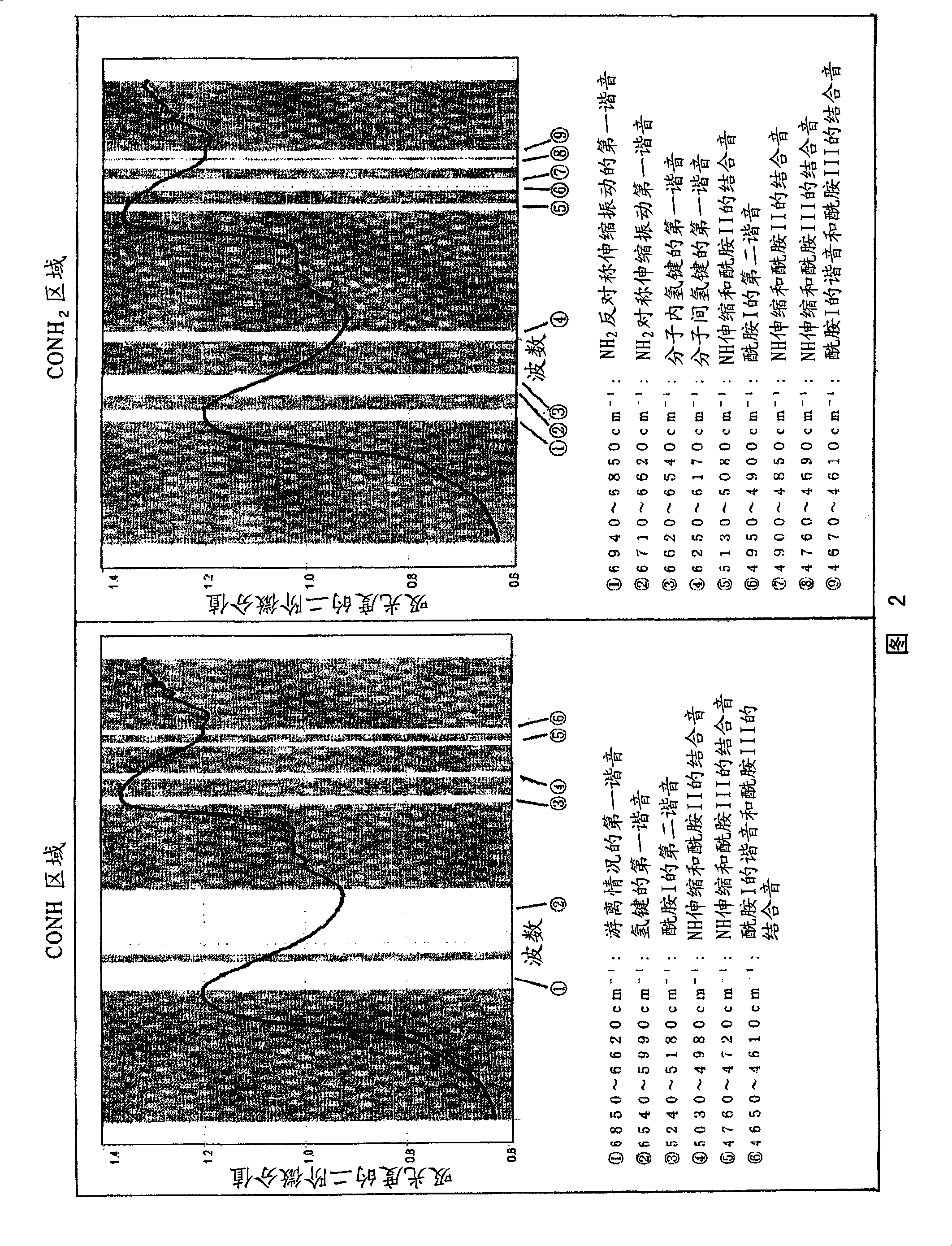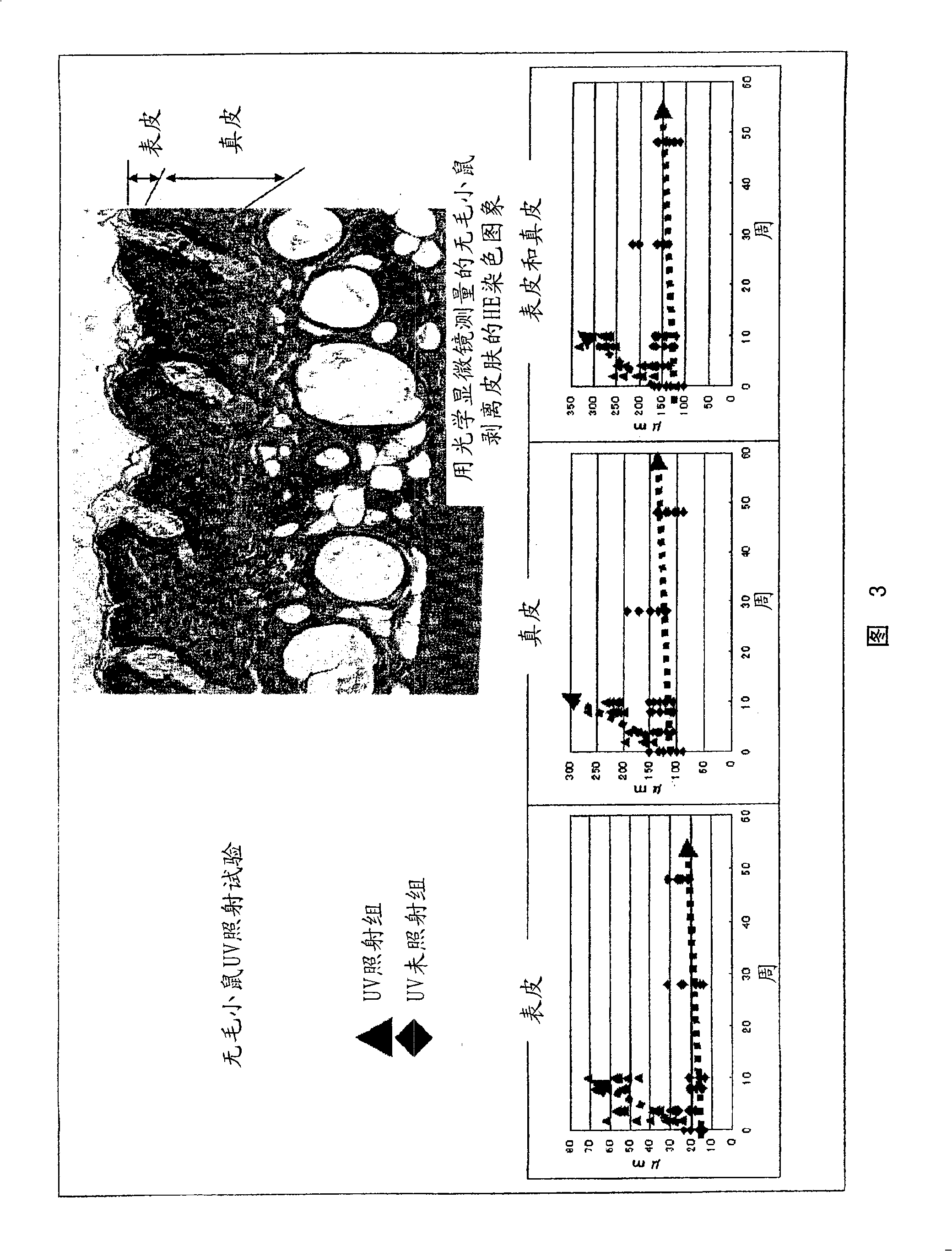Method of evaluating skin conditions and method of estimating skin thickness
A technology for skin and skin damage, applied in medical science, sensors, diagnostic recording/measurement, etc., which can solve the problems of undisclosed measurement of UV light skin damage and physiological aging
- Summary
- Abstract
- Description
- Claims
- Application Information
AI Technical Summary
Problems solved by technology
Method used
Image
Examples
Embodiment 1
[0164] In the near-infrared absorption spectrum of a collection of skin samples obtained from hairless mouse skin, for 5990-5490cm -1 and 5000-4480cm -1 Data processing in the wavenumber region. Specifically, mean center and standard normal variance (SNV) are performed, followed by second derivatives.
[0165] Divide the data-processed spectra every 4cm -1 Separated, the spectral value (second differential value of absorbance) of each divided spectrum is calculated. A matrix is formed from the calculated second-order differential value of the spectral value for each wave number and skin treatment contents (presence / absence of UV irradiation, difference in irradiation amount, and difference in age). Perform principal component analysis on the resulting matrix. From the obtained analysis results, a plane scatter diagram is formed, assuming that the second principal component is used as the first axis and the third principal component is used as the second axis (the two com...
Embodiment 2
[0168] In Example 1, the near-infrared absorption spectrum of a hairless mouse skin sample whose skin damage degree caused by UV light and skin physiological aging degree are unknown is increased, and the data processing is performed according to the same process as in Example 1 to form a matrix, whereby Perform principal component analysis. Fig. 6 is a scatter diagram formed from the obtained results. As shown in Figure 6, the individual sample groups with different treatment content are clearly categorized, and the graph position of the results for skin samples whose degree of damage and physiological aging caused by UV light is unknown determines that this skin is most equivalent to UV Unirradiated 27-week-old group.
Embodiment 3
[0170] The above-mentioned human skin sample collection was measured and analyzed in the same manner as in Example 1. The analysis results obtained by the multivariate analysis form a flat scatter plot assuming the first principal component as the first axis and the second principal component as the second axis. The resulting flat scatter plots are shown in Figures 7 and 8. The 95% density ellipses classified by site are obtained in FIG. 7 , and the 95% density ellipses classified by age are obtained in FIG. 8 . As shown in Figure 7 or 8, realize that the results are very clearly categorized according to arm position or age. Specifically, the degree of physiological aging is higher toward the left of the first principal component axis (horizontal axis), and the degree of damage caused by UV light is higher toward the lower side of the second principal component axis (vertical axis). Therefore, it is recognized from FIG. 7 that the degree of damage caused by UV light is high ...
PUM
 Login to View More
Login to View More Abstract
Description
Claims
Application Information
 Login to View More
Login to View More - R&D
- Intellectual Property
- Life Sciences
- Materials
- Tech Scout
- Unparalleled Data Quality
- Higher Quality Content
- 60% Fewer Hallucinations
Browse by: Latest US Patents, China's latest patents, Technical Efficacy Thesaurus, Application Domain, Technology Topic, Popular Technical Reports.
© 2025 PatSnap. All rights reserved.Legal|Privacy policy|Modern Slavery Act Transparency Statement|Sitemap|About US| Contact US: help@patsnap.com



